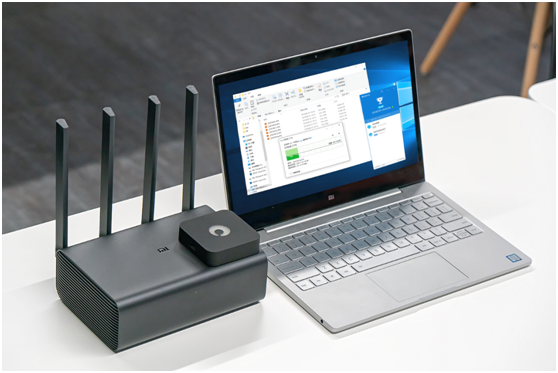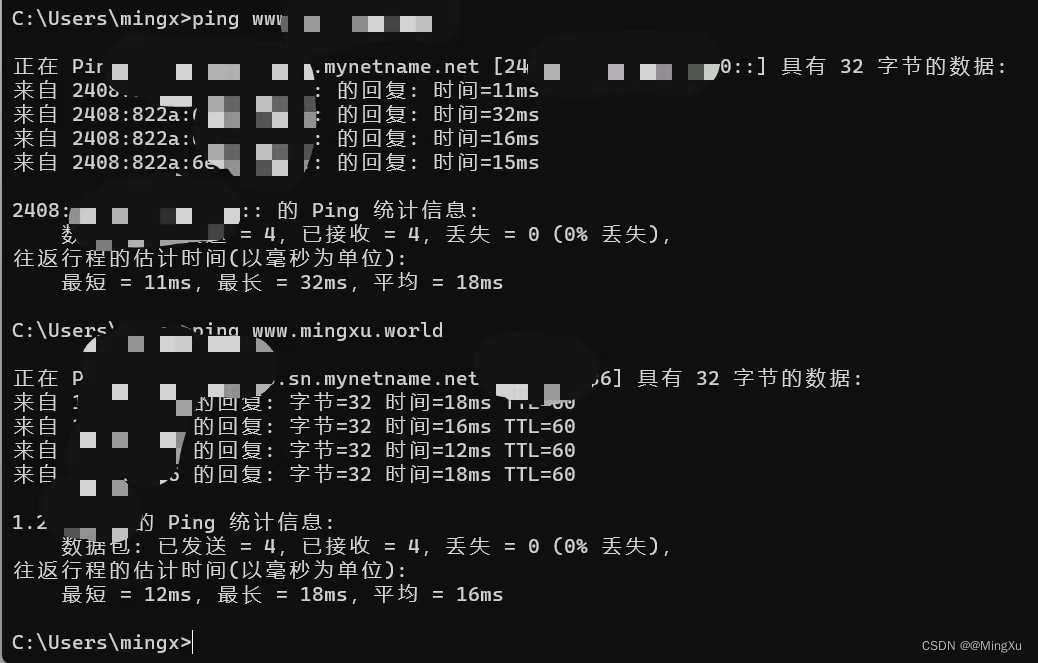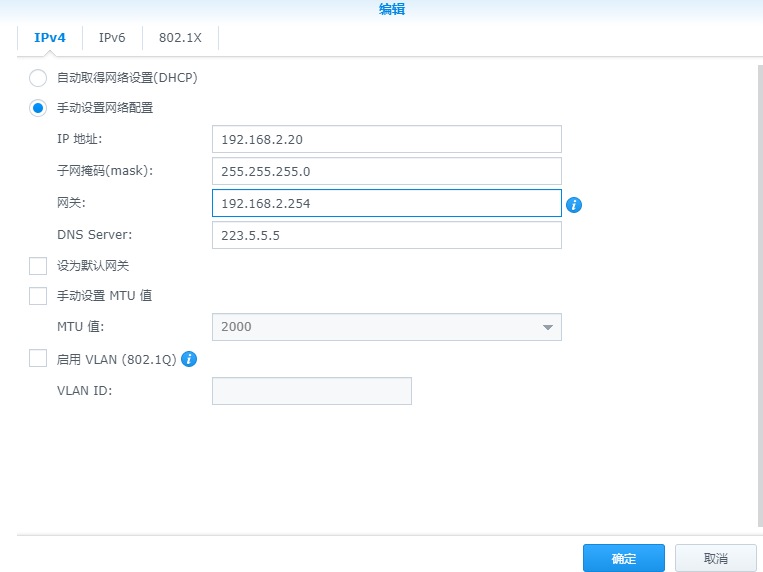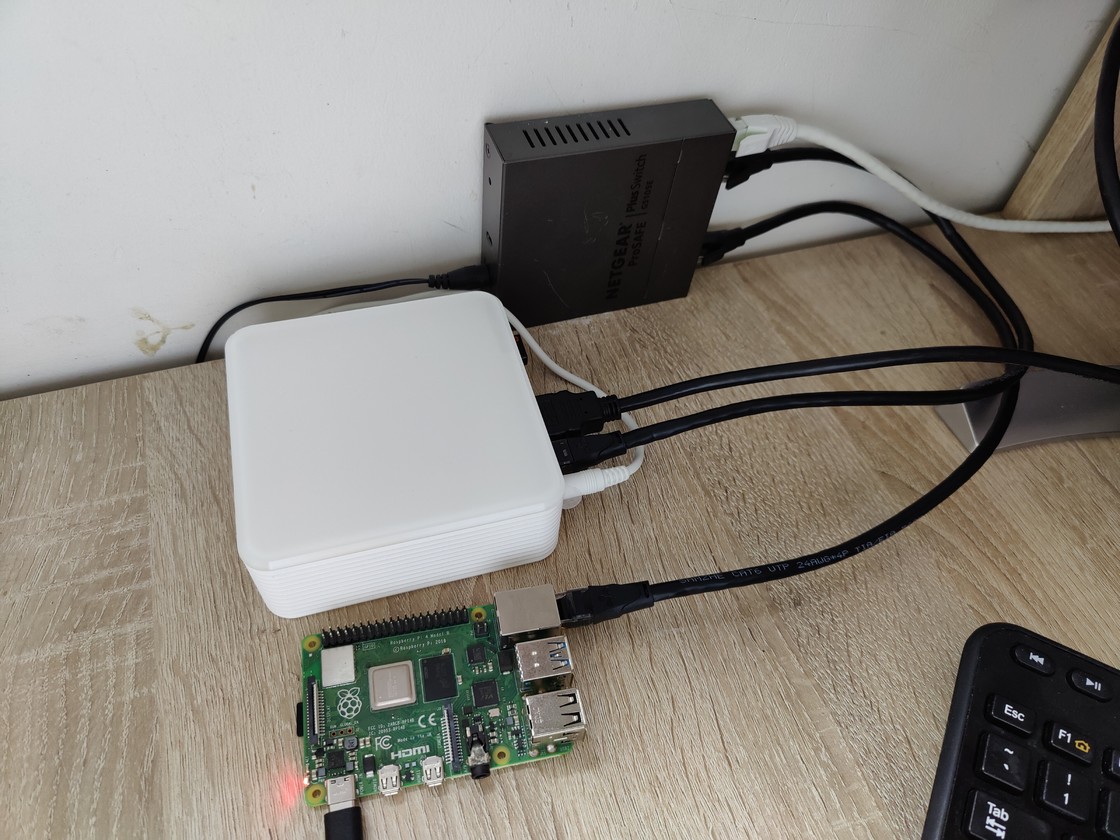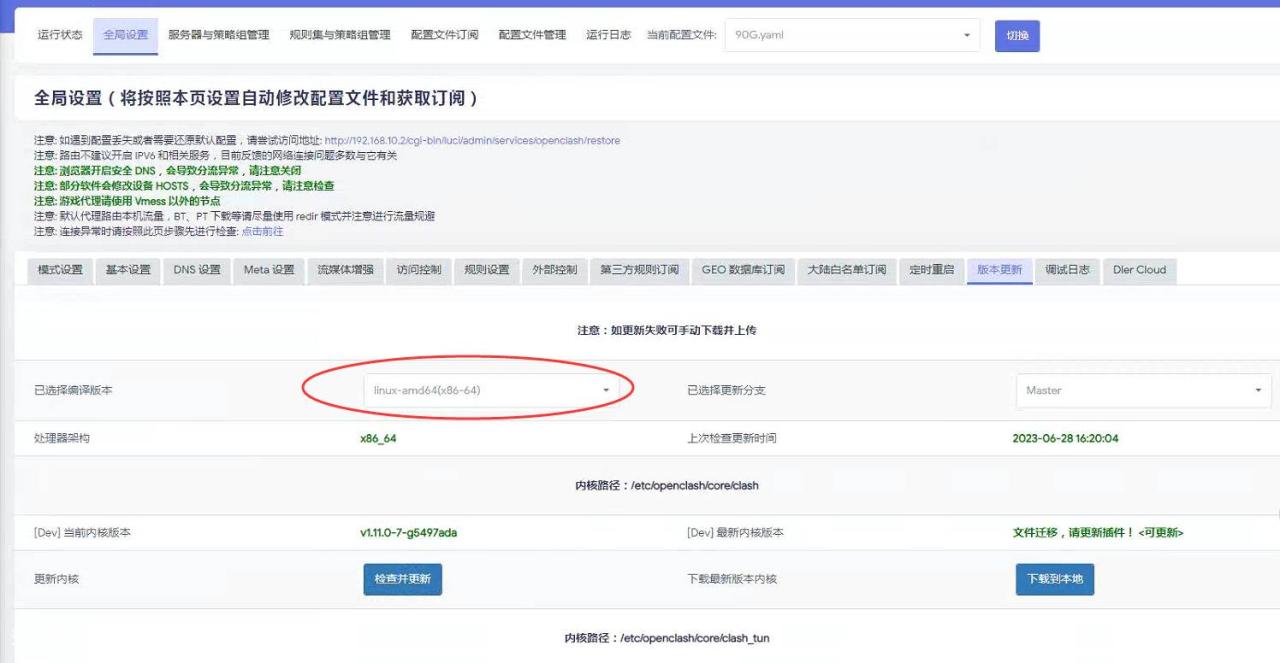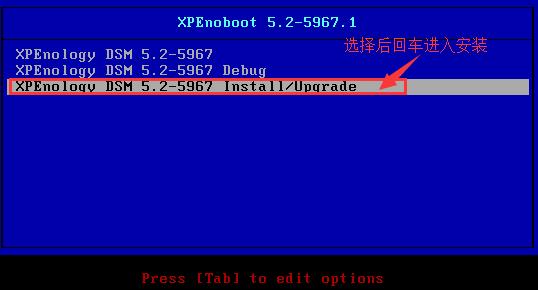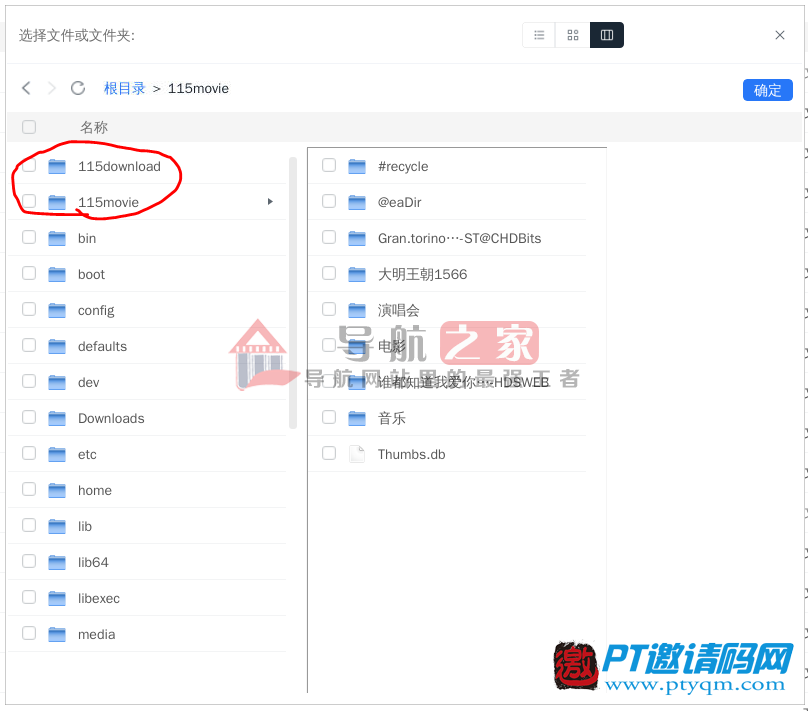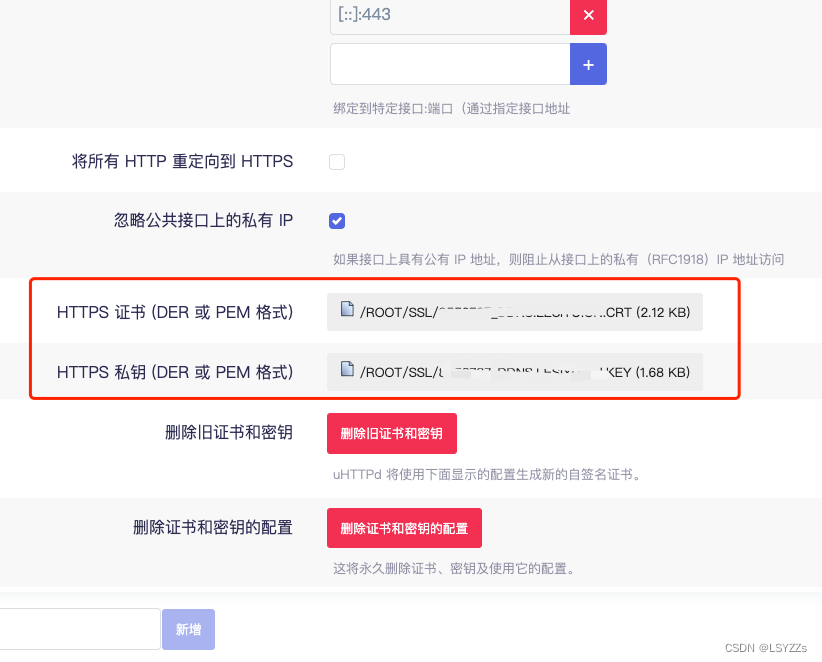几篇参考文章:
1、http://www.anrip.com/post/872
2、http://fengwan.blog.51cto.com/508652/1404534/
源码地址:https://github.com/anrip/ArDNSPod
只是源码只能实现获取本地IP,若是有路由器,仅能获得内网地址。,要向获得外网地址:需要结合两篇文章。
两个文件,放到/usr/bin下面。
第一个文件,ddnspod.sh:
[php]
#!/bin/sh
#################################################
# AnripDdns v5.08
# Dynamic DNS using DNSPod API
# Original by anrip<mail@anrip.com>, http://www.anrip.com/ddnspod
# Edited by ProfFan
#################################################
# OS Detection
case $(uname) in
'Linux')
echo "Linux"
arIpAddress() {
local extip
extip='http://members.3322.org/dyndns/getip'
echo $extip
}
;;
'FreeBSD')
echo 'FreeBSD'
exit 100
;;
'WindowsNT')
echo "Windows"
exit 100
;;
'Darwin')
echo "Mac"
arIpAddress() {
ifconfig | grep "inet " | grep -v 127.0.0.1 | awk '{print $2}'
}
;;
'SunOS')
echo 'Solaris'
exit 100
;;
'AIX')
echo 'AIX'
exit 100
;;
*) ;;
esac
# Get script dir
# See: http://stackoverflow.com/a/29835459/4449544
rreadlink() ( # Execute the function in a *subshell* to localize variables and the effect of `cd`.
target=$1 fname= targetDir= CDPATH=
# Try to make the execution environment as predictable as possible:
# All commands below are invoked via `command`, so we must make sure that `command`
# itself is not redefined as an alias or shell function.
# (Note that command is too inconsistent across shells, so we don't use it.)
# `command` is a *builtin* in bash, dash, ksh, zsh, and some platforms do not even have
# an external utility version of it (e.g, Ubuntu).
# `command` bypasses aliases and shell functions and also finds builtins
# in bash, dash, and ksh. In zsh, option POSIX_BUILTINS must be turned on for that
# to happen.
{ \unalias command; \unset -f command; } >/dev/null 2>&1
[ -n "$ZSH_VERSION" ] && options[POSIX_BUILTINS]=on # make zsh find *builtins* with `command` too.
while :; do # Resolve potential symlinks until the ultimate target is found.
[ -L "$target" ] || [ -e "$target" ] || { command printf '%s\n' "ERROR: '$target' does not exist." >&2; return 1; }
command cd "$(command dirname — "$target")" # Change to target dir; necessary for correct resolution of target path.
fname=$(command basename — "$target") # Extract filename.
[ "$fname" = '/' ] && fname='' # !! curiously, `basename /` returns '/'
if [ -L "$fname" ]; then
# Extract [next] target path, which may be defined
# *relative* to the symlink's own directory.
# Note: We parse `ls -l` output to find the symlink target
# which is the only POSIX-compliant, albeit somewhat fragile, way.
target=$(command ls -l "$fname")
target=${target#* -> }
continue # Resolve [next] symlink target.
fi
break # Ultimate target reached.
done
targetDir=$(command pwd -P) # Get canonical dir. path
# Output the ultimate target's canonical path.
# Note that we manually resolve paths ending in /. and /.. to make sure we have a normalized path.
if [ "$fname" = '.' ]; then
command printf '%s\n' "${targetDir%/}"
elif [ "$fname" = '..' ]; then
# Caveat: something like /var/.. will resolve to /private (assuming /var@ -> /private/var), i.e. the '..' is applied
# AFTER canonicalization.
command printf '%s\n' "$(command dirname — "${targetDir}")"
else
command printf '%s\n' "${targetDir%/}/$fname"
fi
)
DIR=$(dirname — "$(rreadlink "$0")")
# Global Variables:
# Token-based Authentication
arToken=""
# Account-based Authentication
arMail=""
arPass=""
# Load config
#. $DIR/dns.conf
# Get Domain IP
# arg: domain
arNslookup() {
#wget –quiet –output-document=- $inter$1
echo ""
}
# Get data
# arg: type data
arApiPost() {
local agent="AnripDdns/5.07(ligel@163.com)"
local inter="https://dnsapi.cn/${1:?'Info.Version'}"
if [ "x${arToken}" = "x" ]; then # undefine token
local param="login_email=${arMail}&login_password=${arPass}&format=json&${2}"
else
local param="login_token=${arToken}&format=json&${2}"
fi
wget –quiet –no-check-certificate –output-document=- –user-agent=$agent –post-data $param $inter
}
# Update
# arg: main domain sub domain
arDdnsUpdate() {
local domainID recordID recordRS recordCD myIP
# Get domain ID
domainID=$(arApiPost "Domain.Info" "domain=${1}")
domainID=$(echo $domainID | sed 's/.*{"id":"\([0-9]*\)".*/\1/')
# Get Record ID
recordID=$(arApiPost "Record.List" "domain_id=${domainID}&sub_domain=${2}")
recordID=$(echo $recordID | sed 's/.*\[{"id":"\([0-9]*\)".*/\1/')
# Update IP
myIP=$(arIpAddress)
recordRS=$(arApiPost "Record.Ddns" "domain_id=${domainID}&record_id=${recordID}&sub_domain=${2}&record_type=A&value=${myIP}&record_line=默认")
recordCD=$(echo $recordRS | sed 's/.*{"code":"\([0-9]*\)".*/\1/')
# Output IP
if [ "$recordCD" = "1" ]; then
echo $recordRS | sed 's/.*,"value":"\([0-9\.]*\)".*/\1/'
return 1
fi
# Echo error message
echo $recordRS | sed 's/.*,"message":"\([^"]*\)".*/\1/'
}
# DDNS Check
# Arg: Main Sub
arDdnsCheck() {
local postRS
local hostIP=$(arIpAddress)
local lastIP=$(arNslookup "${2}.${1}")
echo "hostIP: ${hostIP}"
echo "lastIP: ${lastIP}"
if [ "$lastIP" != "$hostIP" ]; then
postRS=$(arDdnsUpdate $1 $2)
echo "postRS: ${postRS}"
if [ $? -ne 1 ]; then
return 0
fi
fi
return 1
}
# DDNS
#echo ${#domains[@]}
#for index in ${!domains[@]}; do
# echo "${domains[index]} ${subdomains[index]}"
# arDdnsCheck "${domains[index]}" "${subdomains[index]}"
#done
. $DIR/dns.conf
[/php]
第二个文件,dns.conf:
[php]
# For security reasons, it is recommended that you use token-based auth instead
# arMail="test@gmail.com"
# arPass="123"
# Combine your token ID and token together as follows
arToken="12345,7676f344eaeaea9074c123451234512d"
# Place each domain you want to check as follows
# you can have multiple arDdnsCheck blocks
arDdnsCheck "test.org" "subdomain"
[/php]
增加执行权限
[php]chmod +x /root/ddnspod.sh[/php]
加入任务计划(5分钟执行一次)
[php]echo "*/5 * * * * root /root/ddnspod.sh" >> /etc/crontab[/php]
计划任务执行情况可以查看/var/log/cron
说明:
如果在执行后发现
[php]
[root@localhost ~]# ./ddnspod.sh
./ddns.sh: line 24: nslookup: command not found
hostIP: 114.234.77.222
lastIP:
postRS: 114.234.77.222[/php]
如果你使用的是CentOS则执行
[php]yum -y install bind-utils[/php]
或者是ubuntu的话
[php]sudo apt-get install dnsutils[/php]
因为家里使用ADSL动态IP上网,有时在外面需要使用家里资源,原本使用的是TP-LINK自带的花生壳解析,用过之后发现很不稳定。因为自己注册了域名也已使用了DNSPOD解析。
1.新建脚本文件
<span style="color:#333333"><span style="color:#567482">vim ddns.sh</span></span><span style="color:#333333"><span style="color:#567482">vim ddns.sh</span></span><span style="color:#333333"><span style="color:#567482">vim ddns.sh</span></span>
文件内容如下:
<span style="color:#333333"><span style="color:#567482">#!/bin/sh # 全局变量表 arPass=arMail="" # 获得外网地址 arIpAdress() { local inter="http://members.3322.org/dyndns/getip" wget --quiet --no-check-certificate --output-document=- $inter } # 查询域名地址 # 参数: 待查询域名 arNslookup() { local dnsvr="114.114.114.114" nslookup ${1} $dnsvr | tr -d '\n[:blank:]' | awk -F':' '{print $6}' } # 读取接口数据 # 参数: 接口类型 待提交数据 arApiPost() { local agent="Ddns/3.08" local inter="https://dnsapi.cn/${1:?'Info.Version'}" local param="login_token=${arID},${arToken}&format=json&${2}" wget --quiet --no-check-certificate --output-document=- --user-agent=$agent --post-data $param $inter } # 更新记录信息 # 参数: 主域名 子域名 arDdnsUpdate() { local domainID recordID recordRS recordCD # 获得域名ID domainID=$(arApiPost "Domain.Info" "domain=${1}") domainID=$(echo $domainID | sed 's/.\+{"id":"\([0-9]\+\)".\+/\1/') # 获得记录ID recordID=$(arApiPost "Record.List" "domain_id=${domainID}&sub_domain=${2}") recordID=$(echo $recordID | sed 's/.\+\[{"id":"\([0-9]\+\)".\+/\1/') # 更新记录IP recordRS=$(arApiPost "Record.Ddns" "domain_id=${domainID}&record_id=${recordID}&sub_domain=${2}&record_line=默认") recordCD=$(echo $recordRS | sed 's/.\+{"code":"\([0-9]\+\)".\+/\1/') # 输出记录IP if [ "$recordCD" == "1" ]; then echo $recordRS | sed 's/.\+,"value":"\([0-9\.]\+\)".\+/\1/' return 1 fi # 输出错误信息 echo $recordRS | sed 's/.\+,"message":"\([^"]\+\)".\+/\1/' } # 动态检查更新 # 参数: 主域名 子域名 arDdnsCheck() { local postRS local hostIP=$(arIpAdress) local lastIP=$(arNslookup "${2}.${1}") echo "hostIP: ${hostIP}" echo "lastIP: ${lastIP}" if [ "$lastIP" != "$hostIP" ]; then postRS=$(arDdnsUpdate $1 $2) echo "postRS: ${postRS}" if [ $? -ne 1 ]; then return 0 fi fi return 1 } ################################################### # 设置用户参数 arID="89322" arToken="3222w2e3213e123421421424234" #填写账户的API token # 检查更新域名 arDdnsCheck "anrip.com" "lab"</span></span><span style="color:#333333"><span style="color:#567482">#!/bin/sh # 全局变量表 arPass=arMail="" # 获得外网地址 arIpAdress() { local inter="http://members.3322.org/dyndns/getip" wget --quiet --no-check-certificate --output-document=- $inter } # 查询域名地址 # 参数: 待查询域名 arNslookup() { local dnsvr="114.114.114.114" nslookup ${1} $dnsvr | tr -d '\n[:blank:]' | awk -F':' '{print $6}' } # 读取接口数据 # 参数: 接口类型 待提交数据 arApiPost() { local agent="Ddns/3.08" local inter="https://dnsapi.cn/${1:?'Info.Version'}" local param="login_token=${arID},${arToken}&format=json&${2}" wget --quiet --no-check-certificate --output-document=- --user-agent=$agent --post-data $param $inter } # 更新记录信息 # 参数: 主域名 子域名 arDdnsUpdate() { local domainID recordID recordRS recordCD # 获得域名ID domainID=$(arApiPost "Domain.Info" "domain=${1}") domainID=$(echo $domainID | sed 's/.\+{"id":"\([0-9]\+\)".\+/\1/') # 获得记录ID recordID=$(arApiPost "Record.List" "domain_id=${domainID}&sub_domain=${2}") recordID=$(echo $recordID | sed 's/.\+\[{"id":"\([0-9]\+\)".\+/\1/') # 更新记录IP recordRS=$(arApiPost "Record.Ddns" "domain_id=${domainID}&record_id=${recordID}&sub_domain=${2}&record_line=默认") recordCD=$(echo $recordRS | sed 's/.\+{"code":"\([0-9]\+\)".\+/\1/') # 输出记录IP if [ "$recordCD" == "1" ]; then echo $recordRS | sed 's/.\+,"value":"\([0-9\.]\+\)".\+/\1/' return 1 fi # 输出错误信息 echo $recordRS | sed 's/.\+,"message":"\([^"]\+\)".\+/\1/' } # 动态检查更新 # 参数: 主域名 子域名 arDdnsCheck() { local postRS local hostIP=$(arIpAdress) local lastIP=$(arNslookup "${2}.${1}") echo "hostIP: ${hostIP}" echo "lastIP: ${lastIP}" if [ "$lastIP" != "$hostIP" ]; then postRS=$(arDdnsUpdate $1 $2) echo "postRS: ${postRS}" if [ $? -ne 1 ]; then return 0 fi fi return 1 } ################################################### # 设置用户参数 arID="89322" arToken="3222w2e3213e123421421424234" #填写账户的API token # 检查更新域名 arDdnsCheck "anrip.com" "lab"</span></span><span style="color:#333333"><span style="color:#567482">#!/bin/sh # 全局变量表 arPass=arMail="" # 获得外网地址 arIpAdress() { local inter="http://members.3322.org/dyndns/getip" wget --quiet --no-check-certificate --output-document=- $inter } # 查询域名地址 # 参数: 待查询域名 arNslookup() { local dnsvr="114.114.114.114" nslookup ${1} $dnsvr | tr -d '\n[:blank:]' | awk -F':' '{print $6}' } # 读取接口数据 # 参数: 接口类型 待提交数据 arApiPost() { local agent="Ddns/3.08" local inter="https://dnsapi.cn/${1:?'Info.Version'}" local param="login_token=${arID},${arToken}&format=json&${2}" wget --quiet --no-check-certificate --output-document=- --user-agent=$agent --post-data $param $inter } # 更新记录信息 # 参数: 主域名 子域名 arDdnsUpdate() { local domainID recordID recordRS recordCD # 获得域名ID domainID=$(arApiPost "Domain.Info" "domain=${1}") domainID=$(echo $domainID | sed 's/.\+{"id":"\([0-9]\+\)".\+/\1/') # 获得记录ID recordID=$(arApiPost "Record.List" "domain_id=${domainID}&sub_domain=${2}") recordID=$(echo $recordID | sed 's/.\+\[{"id":"\([0-9]\+\)".\+/\1/') # 更新记录IP recordRS=$(arApiPost "Record.Ddns" "domain_id=${domainID}&record_id=${recordID}&sub_domain=${2}&record_line=默认") recordCD=$(echo $recordRS | sed 's/.\+{"code":"\([0-9]\+\)".\+/\1/') # 输出记录IP if [ "$recordCD" == "1" ]; then echo $recordRS | sed 's/.\+,"value":"\([0-9\.]\+\)".\+/\1/' return 1 fi # 输出错误信息 echo $recordRS | sed 's/.\+,"message":"\([^"]\+\)".\+/\1/' } # 动态检查更新 # 参数: 主域名 子域名 arDdnsCheck() { local postRS local hostIP=$(arIpAdress) local lastIP=$(arNslookup "${2}.${1}") echo "hostIP: ${hostIP}" echo "lastIP: ${lastIP}" if [ "$lastIP" != "$hostIP" ]; then postRS=$(arDdnsUpdate $1 $2) echo "postRS: ${postRS}" if [ $? -ne 1 ]; then return 0 fi fi return 1 } ################################################### # 设置用户参数 arID="89322" arToken="3222w2e3213e123421421424234" #填写账户的API token # 检查更新域名 arDdnsCheck "anrip.com" "lab"</span></span>
我们只需要将上面的
# 设置用户参数
arID="user@anrip.com" //DNSPOD的API ID
arToken="anrip.net" //DNSPOD的API Token
# 检查更新域名
arDdnsCheck"anrip.com" "lab" //需要更新的域名为anrip.com,主机为lab,就是lab.anrip.com
arDdnsCheck"anrip.net" "lab" //更新lab.anrip.net
修改成自己的信息即可
3.增加执行权限
<span style="color:#333333"><span style="color:#567482">chmod +x /root/ddns.sh</span></span><span style="color:#333333"><span style="color:#567482">chmod +x /root/ddns.sh</span></span><span style="color:#333333"><span style="color:#567482">chmod +x /root/ddns.sh</span></span>
4.加入任务计划(5分钟执行一次)
<span style="color:#333333"><span style="color:#567482">echo "*/5 * * * * root /root/ddns.sh" >> /etc/crontab</span></span><span style="color:#333333"><span style="color:#567482">echo "*/5 * * * * root /root/ddns.sh" >> /etc/crontab</span></span><span style="color:#333333"><span style="color:#567482">echo "*/5 * * * * root /root/ddns.sh" >> /etc/crontab</span></span>
计划任务执行情况可以查看/var/log/cron
说明:
如果在执行后发现
<span style="color:#333333"><span style="color:#567482">[root@localhost ~]# ./ddns.sh ./ddns.sh: line 24: nslookup: command not found hostIP: 114.234.77.222 lastIP: postRS: 114.234.77.222</span></span><span style="color:#333333"><span style="color:#567482">[root@localhost ~]# ./ddns.sh ./ddns.sh: line 24: nslookup: command not found hostIP: 114.234.77.222 lastIP: postRS: 114.234.77.222</span></span><span style="color:#333333"><span style="color:#567482">[root@localhost ~]# ./ddns.sh ./ddns.sh: line 24: nslookup: command not found hostIP: 114.234.77.222 lastIP: postRS: 114.234.77.222</span></span>
如果你使用的是CentOS则执行
<span style="color:#333333"><span style="color:#567482">yum -y install bind-utils</span></span><span style="color:#333333"><span style="color:#567482">yum -y install bind-utils</span></span><span style="color:#333333"><span style="color:#567482">yum -y install bind-utils</span></span>
或者是ubuntu的话
<span style="color:#333333"><span style="color:#567482">sudo apt-get install dnsutils</span></span><span style="color:#333333"><span style="color:#567482">sudo apt-get install dnsutils</span></span><span style="color:#333333"><span style="color:#567482">sudo apt-get install dnsutils</span></span>
原文链接:https://blog.csdn.net/xgocn/article/details/96565149





